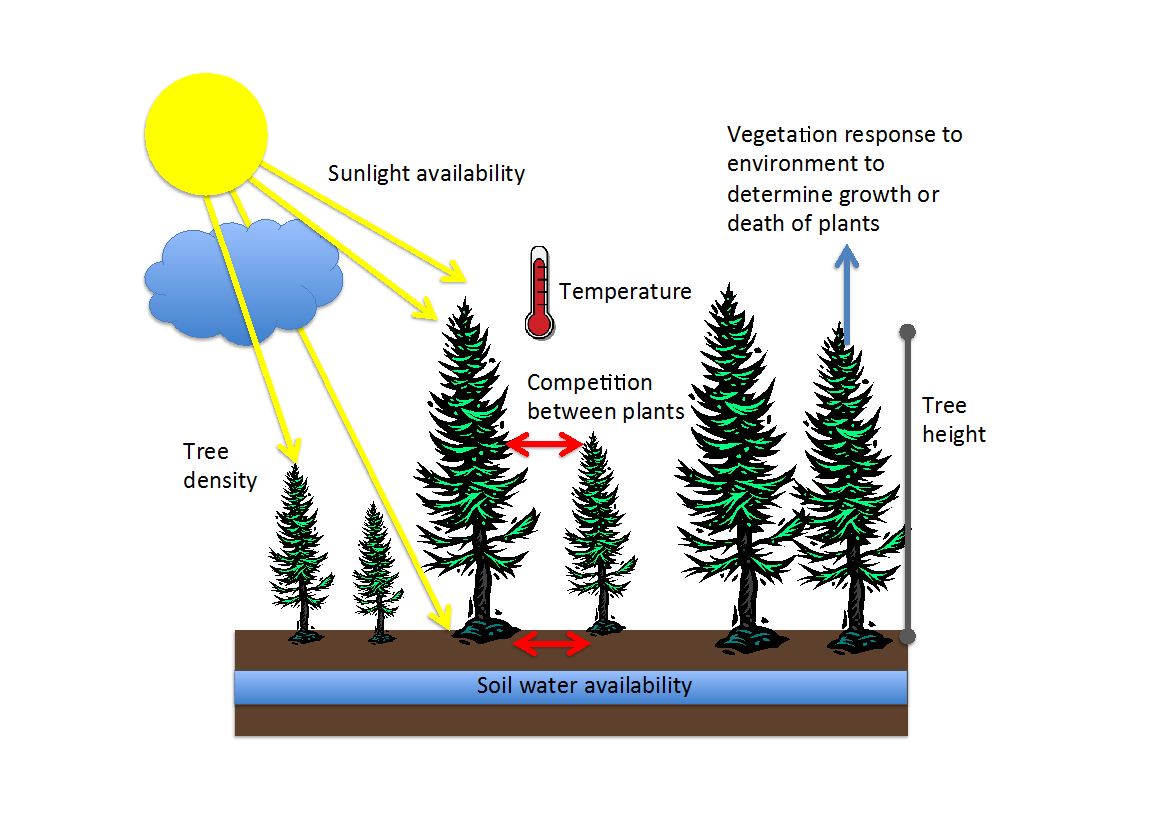
Predicting the future response of forest carbon to changing weather patterns and land management decisions is a key scientific question of high societal relevance addressed by GEDI.
The world’s forests provide many important ecosystem services, maintain large stocks of carbon, and exchange large fluxes of carbon with the atmosphere. Forest carbon modeling is used to improve the understanding of key carbon stocks and fluxes, predict future dynamics, and to quantify both the risks of future carbon losses and the opportunities for future gains in the terrestrial biosphere. Currently, these models are uncertain and poorly constrained by lack of data on both the extent and successional status of forests. From the explicit representation of individual trees in localized forest gap models to the newest generation of global land models, a diverse family of computer models are working to track vegetation 3D structure to improve understanding of key processes.
Building on a strong foundation of Earth observations, measurements of forest structure from GEDI provide a leap forward in the quantity, accuracy, and resolution of measurements of vegetation structure compared to those previously available. This in turn allows for more detailed model initialization and testing, ultimately improving predictions of terrestrial ecosystem dynamics and carbon.






